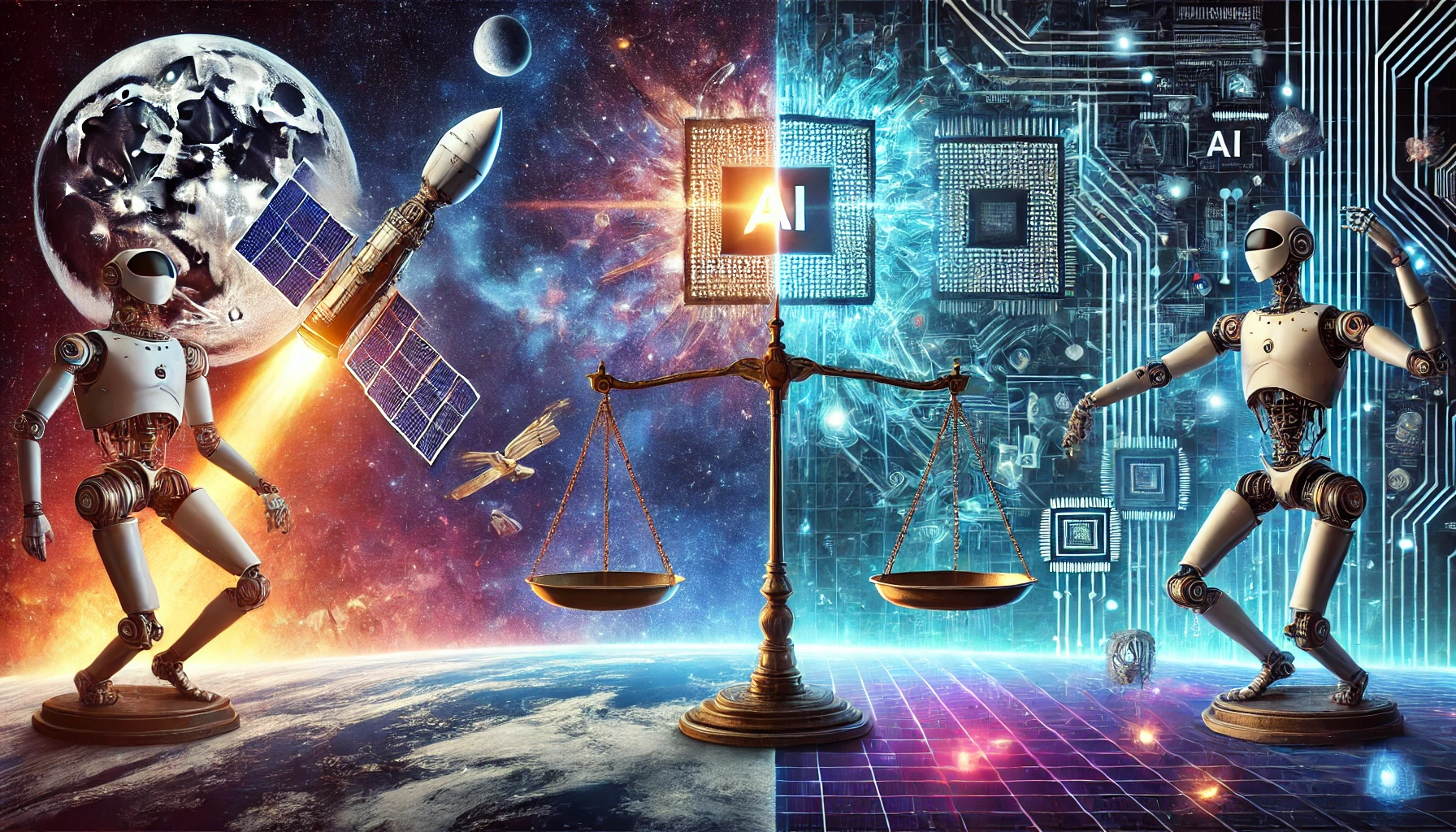I remember when I went to see Top Gun: Maverick. From the first few seconds—when Danger Zone blared through the speakers and the familiar jets took off—I was locked in. The action, the cinematography, the nostalgia, and the sheer thrill of it made for an incredible experience.
After the movie, my wife asked me, “Did you like it better than the first one?”
I hesitated.
“Yes,” I finally admitted. But almost before I could finish saying it, I added, “But only because of the first one. Without it, this wouldn’t have been possible.”
That moment stuck with me, and not just because of the movie. It made me think about something bigger—something that applies directly to the tech industry, AI, and business: how much of what we call ‘innovation’ is actually just optimization or just plain copy? I mean, think about the last time Hollywood made an original film. And, more importantly, why does that distinction matter?
DeepSeek: An Innovation or Just a Smart Sequel?
The recent DeepSeek moment in AI raised this very question. At first, it seemed like a major breakthrough—a Chinese company managed to train a large language model for just $5.6 million, a fraction of what OpenAI, Google, and others have spent. Some even called it a “Sputnik moment,” a sign that China was pulling ahead in the AI race.
But then the details emerged. This was a clear moment where you realized the trailer was better than the movie, and the movie was a typical sequel.
DeepSeek wasn’t built from scratch. It was trained on top of existing open-source models, like OpenAI ChatGPT. It was not an entirely new innovation but rather an optimization of work that had already been done by others.
This isn’t a knock against DeepSeek—optimization is valuable. But we have to be careful not to mistake efficiency for invention. And if this was a deliberate act of intellectual property theft, it wouldn’t be the first time we’ve seen a market for that. Remember Napster and Limewire? Both platforms thrived on the idea that people wanted music, but they didn’t necessarily want to pay for it. The technology made access easy, but it also devalued the work of the artists, producers, and studios who created the music in the first place.
Unfortunately, there’s a major disconnect between access to innovation and appreciation for the effort required to create it. People love free and easy access, but they rarely consider the cost of getting something to that point. When companies invest billions into research, trial, and failure to push the boundaries of what’s possible, but the public only sees the end product—or worse, a cheaper copy—it creates a system where we celebrate efficiency at the expense of true progress.
What Counts as Innovation?
This brings us to a deeper conversation: What do we actually consider innovation?
We tend to think of innovation as creating something entirely new—the first Top Gun, the first iPhone, the first electric car. But there’s another kind of innovation, one that refines and improves rather than invents.
- The first movers take the big risks and invest the most money. They lay the foundation. OpenAI, Google, and DeepMind spent billions training large language models from scratch. Tesla had to figure out EV batteries and infrastructure before the world was ready. The first movie in a franchise takes the risk of introducing characters, setting, and world-building.
- The fast followers come in and refine. They find ways to make things cheaper, more efficient, and more scalable. DeepSeek, Microsoft’s Phi models, and even Apple in many cases, have built their success by improving existing technology rather than inventing it. Top Gun: Maverick was a phenomenal movie, but it worked because it already had a world and a fanbase to build upon.
So the question is: Does optimizing count as innovation?
The Cost of Copying vs. Creating
The problem with overpraising fast followers is that it can discourage original research and investment. If DeepSeek’s model is celebrated as a breakthrough without acknowledging that it was built on others’ work, what incentive is there for companies to invest billions in foundational research?
We see this play out in industries beyond AI:
- Pharmaceuticals: Generic drug manufacturers don’t need to spend billions on research; they can wait for patents to expire and optimize production.
- Electric Vehicles: Traditional carmakers waited for Tesla to solve battery issues before entering the EV market.
- Streaming Services: Netflix pioneered streaming, but competitors learned from its successes (and mistakes) to improve their own models.
There’s nothing wrong with optimization—it’s necessary for progress. But if we only reward fast followers and forget the first movers, we risk losing true innovation.
Why Investors and Businesses Should Care
If we start mistaking optimization for innovation, we’ll create an environment where:
- Investors avoid funding new research because it’s too risky.
- Tech companies prioritize efficiency over bold ideas.
- Companies start closing, protecting their models, and reducing collaboration.
- We enter a cycle of incremental improvements instead of breakthrough advancements.
Think about what happens if we don’t support first movers: AI development slows down. The same companies people are quick to criticize for their high spending—like OpenAI and Google—are the ones making real breakthroughs possible. Without them, there is no DeepSeek. There is no optimization to copy.
Final Thought: Don’t Confuse the Sequel for the Original
At the end of the day, Top Gun: Maverick was an incredible film, not just because of its execution but because it had a foundation to build on. The nostalgia, the familiar characters, and the emotional depth all stemmed from the groundwork laid by the original Top Gun. Without that first film, Maverick wouldn’t have carried the same weight, no matter how well it was made.
The same principle applies to innovation and optimization. DeepSeek’s success may be impressive, but it was not built in isolation. It leveraged the pioneering work of companies that invested billions in research and development, pushing the boundaries of artificial intelligence long before DeepSeek entered the scene. While optimization plays a crucial role in making technology more accessible, scalable, and efficient, it is not the same as creating something entirely new.
This is why the response to DeepSeek being labeled a “Sputnik moment” was entirely misplaced. The launch of Sputnik in 1957 was a true paradigm shift—an event that fundamentally changed the course of technological competition and global strategy. DeepSeek, on the other hand, did not introduce a groundbreaking innovation; it merely optimized existing research. There was no revolutionary breakthrough, no fundamentally new technology—only a more cost-efficient iteration of what had already been developed.
The danger lies in failing to distinguish between refinement and true invention. If we place too much emphasis on optimization while undervaluing original innovation, we risk creating an environment where real breakthroughs become rare. Research and development require massive investment, both in terms of capital and intellectual effort, and if the market primarily rewards those who refine rather than those who invent, companies may become reluctant to take the risks necessary for meaningful progress.
If this cycle continues unchecked, we may find ourselves trapped in an endless loop of refining existing technologies without making significant advancements. Optimization has its place, but without continued innovation, there comes a point where there is nothing left to improve. DeepSeek is a reminder that efficiency can be powerful—but it is not a Sputnik moment. The real challenge is ensuring that we support and incentivize both—recognizing the value of efficiency while never losing sight of the immense cost and effort behind true invention.




